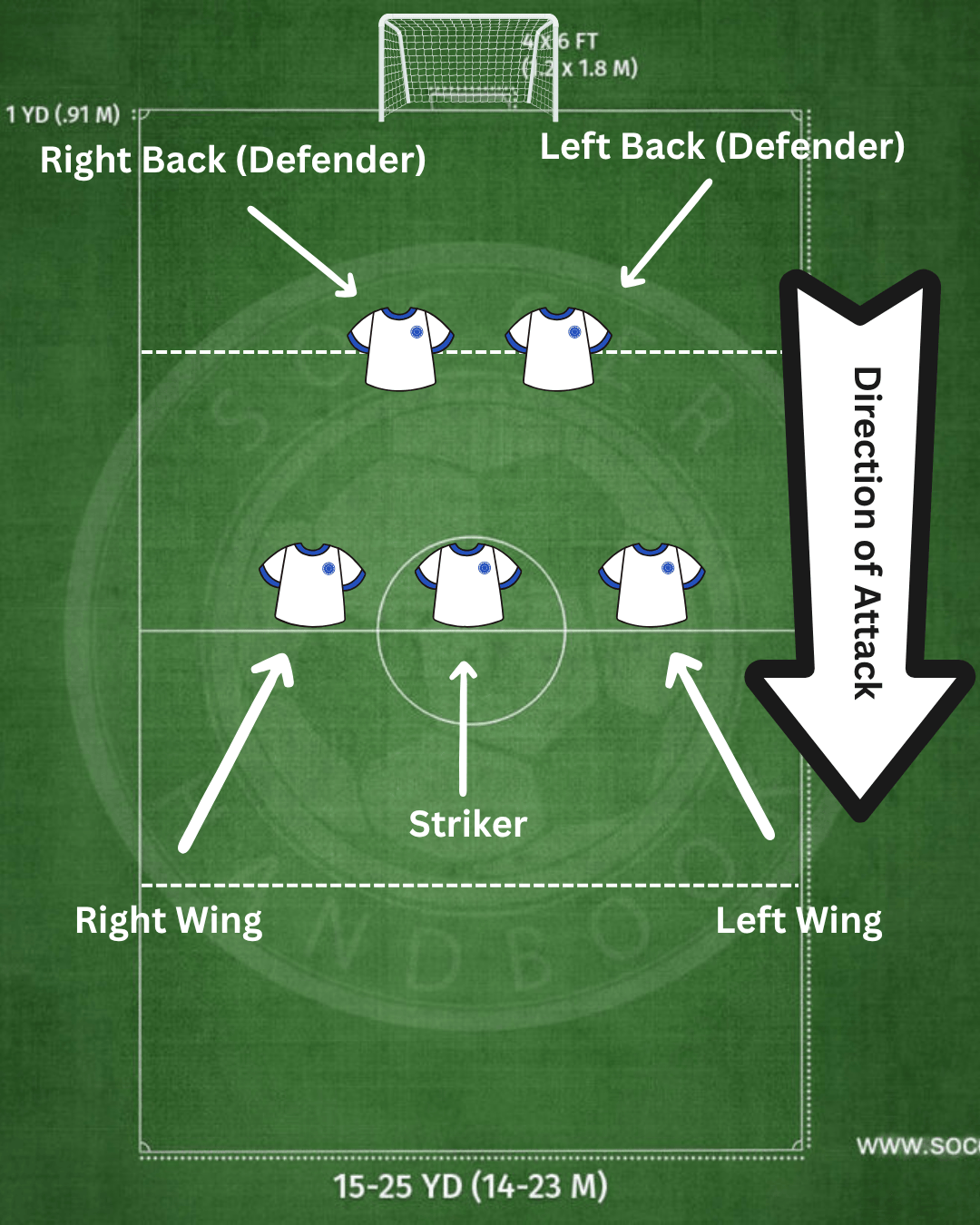The Basics:
The three most important things we want the players to learn, at any division, are:
1) to have fun, 2) to try their best, and 3) to work together as a team. As coaches, we should be focused on
Player Development,
Positive Coaching, and
properly teaching the technical and tactical mechanics of soccer.Foundational Foot Skills:
These skills build the foundation for the players' technical knowledge and skills. Toe taps, sole rolls, push pulls, tick tocks, and roll overs are great foundational foot skills to teach at 8U and to continue practicing. Have your players get used to touching the ball with all proper parts of the foot.
See the chart below for videos on these skills.
Dribbling:
Players should be learning how to dribble (move the ball down the field) with the
inside of both feet. Focus on
keeping the ball controlled and at the player's feet. If your players are able to advance their dribbling skills, teach them to dribble quickly using their laces. Players should be learning to dribble in a straight line, as well as through cones. Start with the basics at the beginning of the season and progress your players as they learn and grow. Do not be afraid to challenge them with new techniques, drills, and skills.
See the chart below for videos on these skills.
Passing:
Players should be learning to pass with the inside of both feet. Their plant foot (non-passing foot), should be placed next to the ball with their toe facing the intended target. Their passing foot should swing through the ball, striking the midline of the ball with the inside of their foot. The player's knee should be slightly bent and their hip opened up. Players should be learning a
two touch passing method. The first touch is to control the ball they're receiving, and the second touch is to pass the ball.
See the chart below for videos on these skills.
Shooting:
Players should be learning to shoot the ball with the top of their foot (laces). Players should NOT be shooting with their toes. Work with your players throughout the season to transition from shooting with their toe, to shooting with the proper part of the foot. When shooting the ball, their plant foot (non shooting foot) should be placed next to the ball and with their toe pointing toward the goal. Their shooting foot should swing through the ball, striking the middle of the ball with the top part of their foot (laces). Players should keep their toes pointed straight (not flexed to the sky), and their ankles locked. Encourage players to swing all the way through their shot.
See the chart below for videos on these skills.
Set Pieces:
Set Pieces include: Kick Offs, Throw-ins, Goal Kicks, and Corner Kicks. Players should be learning the rules for all set pieces, as they will build on these skills in higher divisions.
See the chart below for videos on these skills.
Kick Offs: These are taken at the start of the first and second half of a game and whenever a goal is scored. The ball must be stationary at the start of a kick off. The team NOT kicking off must stay outside of the center circle and on their half of the field. The ball is not in play until it has moved. The player taking the kick off must wait for the referee to blow their whistle before executing a kick off.
Throw-Ins: These are taken when the ball has fully crossed the touchline (side of the field). The team that did NOT touch the ball last will take the throw in. The player must keep both feet on the ground and my not step onto the field during a throw-in. The ball goes over the player's head and is thrown onto the field using both hands.
Goal Kicks: These are taken when the
ATTACKING team kicks the ball fully over the goal line, but not into the goal. The ball is placed on the goal line by the
DEFENDING team, near the goal and on the side it went out. The opposing team must be BEHIND the build out line during the goal kick. Players are encouraged to kick the ball either 1) as hard as they can or 2) to a teammate. Instruct your players to NEVER kick the ball across (in front of) the goal! (FAR AND WIDE is best!)
Corner Kicks: These are taken when the ball is kicked fully over the goal line, but not in the goal, by the
DEFENDING team (kicking the ball out near your own goal). The
ATTACKING team will place the ball in the corner arc on the side it went out. Players will kick the ball back into the field of play. Work with your players to keep the ball on the field during a corner kick, and preferably kicked towards the goal they are scoring on. Work with the other players on the field to be in a position to receive a pass from their teammate.
Basic Formations/Lineups:
This is a great age to begin introducing formations and positions. Our Region plays 5 v 5 small sided games in the 8U division. Scroll down to see examples of formations with positions to teach your players. While not necessary at this division, teaching positions and formations helps build a foundations for older divisions. You'd be surprised how easily the kids catch on to positions once taught! (And it makes giving game day lineup instructions so much easier!)
Formation/Positions:
